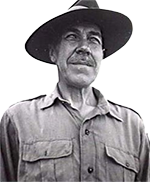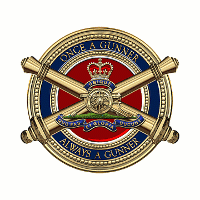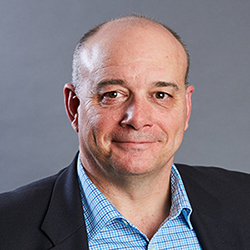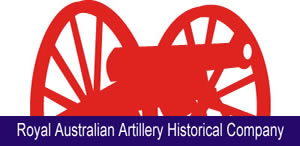 |
|
Cecil Arthur Callaghan (1890-1967), army officer and merchant, was born on 31 July 1890 in Sydney, son of Robert Samuel Callaghan merchant, and his wife Alice Emily, née Whitehead, both Melbourne born. Cecil was educated at Sydney Grammar School before joining his father's firm which imported boots and shoes. Six feet (183 cm) tall and well built, he enlisted as a citizen-soldier in the Australian Field Artillery in 1910 and was commissioned next year. On 18 August 1914 he transferred to the Australian Imperial Force and two months later embarked for the Middle East as a captain in the 1st Field Artillery Brigade.
After training in Egypt, he took part in the landing at Gallipoli on 25 April 1915. During operations on 12 July he moved forward with the infantry and, from captured trenches, established telephone communication with his battery; while continuing to advance under heavy fire, he sent back valuable reports. He was awarded the Distinguished Service Order. In October he went to Egypt for three weeks to organize the 5th Howitzer Battery and in December participated in the evacuation from the Gallipoli peninsula. Having transferred to the 5th Divisional Artillery in Egypt, he was promoted major and made acting commander of the 25th Howitzer Battery in March 1916. |
Moving to France in June, Callaghan was posted next month to the 13th F.A.B. as a battery commander. On the Somme and in the Ypres sector (Belgium), his unit performed outstandingly in 1917, despite suffering more casualties than other batteries in the division. In March 1918 he was promoted temporary lieutenant colonel and placed in command of the 4th F.A.B., 2nd Divisional Artillery. After serving in June as a liaison officer with French troops at Villers-Bretonneux, in the final advances (August to November) he 'commanded his brigade with marked success'. Appointed C.M.G. and to the French Légion d'honneur in 1919, Callaghan was mentioned in dispatches four times. He sailed for Australia in July and his A.I.F. appointment terminated on 22 January 1920.
Resuming his civilian occupation and his Militia service, Callaghan had charge of the 3rd (1920-21) and the 7th (1921-26) Field Artillery brigades. On 1 May 1926 he was promoted temporary colonel and given command of the 2nd Divisional Artillery; for five years his divisional commander was Major General H. G. Bennett. A substantive colonel from 1929, Callaghan commanded the 8th Infantry Brigade in 1934-38. He was made brigadier, Royal Australian Artillery, Eastern Command, in November 1939. On 1 July 1940 he was selected to be commander, Royal Australian Artillery, in the A.I.F.'s 8th Division; in September Bennett again became his immediate superior. Callaghan visited Malaya in June next year to investigate command problems in the division and arrived in Singapore in August to assume his duties.
In November-December 1941 he administered the division while Bennett acquainted himself with A.I.F. operations in the Middle East. The Japanese landed at Kota Bharu, Malaya, on 8 December. To meet a possible threat to Endau, Callaghan altered the disposition of Australian units. On his return, Bennett strongly disapproved of the changes and ordered the resumption of the previous positions. Throughout the fighting in Malaya, Callaghan's regiments gave fine support to the infantry. Nonetheless, the overall situation deteriorated so rapidly that on 15 February 1942 Lieutenant General A. E. Percival, the British general officer commanding, Malaya, decided to surrender in Singapore; a cease-fire was set for 8.30 p.m. About two minutes after that time, Bennett called on Callaghan who was weak from a recent attack of malaria, informed him of his determination to escape and handed over the division to him. Callaghan did not approve of Bennett's action.
Next day, when Bennett's disappearance came to Percival's attention, he formally appointed Callaghan commander of the A.I.F. in Malaya and promoted him temporary major general. Callaghan did all he could to raise morale and to ameliorate the appalling conditions which his men endured in Changi prisoner-of-war camp. Despite the 'starvation diet', he managed to set aside a three-day supply of rations as a reserve for the soldiers. He also insisted that discipline be maintained, whether in regard to smart turnouts or to punctilious saluting. Percival said of him: 'A more loyal or courageous man I never met . . . he bore uncomplainingly his own sufferings'.
In August Callaghan and other senior officers were moved by sea to Formosa (Taiwan). There, in Karenko camp, he was beaten by the Japanese, and suffered from dysentery and malaria; his weight dropped from 13 st. 6 lb. (85 kg) to 8 st. 5 lb. (53 kg). Having been shifted to Tamasata camp in April 1943 and to Shirakawa camp in June, he was flown to Japan in October 1944 and then to Manchuria. He was freed by the Russians in August 1945.
Callaghan travelled to Morotai where he met the commander-in-chief, General Sir Thomas Blamey, to whom he delivered a letter from Percival which stated that Bennett had relinquished his command without permission. At a military court of inquiry into Bennett's conduct, held in Australia in October 1945, Callaghan claimed that he had not immediately informed Percival of Bennett's departure because he had 'felt ashamed'. Next year Callaghan reported to Prime Minister J. B. Chifley on allegations that Australian prisoners of war had been harshly treated by their own officers. Callaghan explained that officers had been obliged to act against individual offenders to prevent the Japanese from punishing prisoners en masse. On 27 January 1947, although sick in hospital, he commented on Bennett's and Percival's reports on the operations in Malaya; he supported Percival and found fault with Bennett's account.
Mentioned in dispatches and appointed C.B. (1946) for his leadership and devotion to duty while a prisoner of war, Callaghan was promoted major general in 1947 (with effect from 1 September 1942) and placed on the Retired List on 10 April. He was active in the Returned Sailors', Soldiers' and Airmen's Imperial League of Australia and a founder of the Ku-ring-gai sub-branch. Callaghan was particular about dress and his involvement in the footwear industry earned him the nickname, 'Boots'. He had a very good memory and retained his strong faith in Christianity. After a long illness, he died, unmarried, on 1 January 1967 at Gordon and was cremated with Methodist forms. The 8th Division Association honoured him with a memorial service.
|








